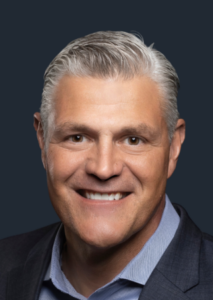April 1, 2025
Want better door-to-clinician times? Take time to save time.
By: Tony Briningstool, MD, FACEP, CEO for Emergency Medicine
 Once a patient is through the doors of the emergency department, how fast they’re seen matters. Not just for the problem they’re there to address — but because the emotional stress overlaying that problem is exacerbated when the patient is left to wait indefinitely.
Once a patient is through the doors of the emergency department, how fast they’re seen matters. Not just for the problem they’re there to address — but because the emotional stress overlaying that problem is exacerbated when the patient is left to wait indefinitely.
The faster a patient is seen — and treated with efficient, empathetic, and thorough care — the more likely they are to feel affinity toward the hospital. As hospitals want to be recognized as the preferred place in their community to receive exceptional care — and patients want to know there’s a place they can count on when the need for emergent care arises — improving door-to-clinician times is the clearest path toward building confidence, loyalty, and, ultimately, solidifying the hospital’s reputation for putting patients first.
Front door, first impression
As the front door and first impression of a hospital, your reputation largely hinges on the experience a patient has once they’ve entered your emergency department (ED). And while it’s no secret to emergency medicine teams like ours what makes an ED run smoothly vs. poorly, it’s how we execute against those best practices that either make or break the patient experience.
The best barometer for whether you’ll earn the loyalty or draw the ire of your community is how quickly you can get a patient in front of a clinician, and how effectively you relieve not only their physical symptoms but their emotional distress, always compounded by waiting.
But to save time, you have to invest it in how you optimize your ED.
Our solution to improving door-to-clinician time
Door-to-clinician time in our specialty is table stakes. People want to be seen — and expect to be seen — in a timely manner when they come to the ED with what ails them, whether chest pain, a nasty gash, or a sick child.
For some hospitals, “seeing” the patient means checking them in and then sending them back to the waiting room. That door-to-person time checks a box but does little to alleviate the patient’s suffering.
For Sound, that’s not good enough.
Within our emergency medicine practices, door-to-clinician time is instead defined as door-to-meaningful care experience. We want our patients to feel like a priority — and we’ve developed ways to operationalize how that happens:
- Accelerating care times. Our team employs rapid check-in, which gets the patient into the treatment area for evaluation and any labs or diagnostics needed to help determine next steps. Once evaluated, we use a split-flow or triage model to ensure the patient gets the right care based on acuity and severity of symptoms. In 2024, our overall door-to-clinician time across all emergency medicine practices was 21 minutes.
- Breaking down siloes for better efficiency. While we can’t control what’s happening outside of the ED, we can extend ourselves as partners and collaborators with the broader team around us — including nurses, hospitalists, and care managers — to ensure we’re working in lockstep to better serve the needs of our patients.
- Better movement through the system. Once the patient has been evaluated and treated by our clinicians, we lean into our collaborative partnerships to help coordinate that patient’s discharge home, if they’re able, or move to admit them quickly, so they can get the additional care they need while freeing up the team to treat the next ED patient.
In action, these processes and protocols yield results that matter not only to our hospital partners but to the patients and the community at large. One of the hospitals we partner with saw patients leaving their ED due to long wait times. By implementing the changes mentioned above, they saw remarkable improvements across the board:
- 85 percent decrease in patients who left without treatment
- 44 percent improvement in discharge length of stay
- 56 percent improvement in admit length of stay
- $3K improvement in revenue capture per patient, based on recapture of patients previously leaving
Being intentional brings a more meaningful experience
Running an emergency department is hard work. More patients are seen in the ED than any other place in the hospital, making it the primary place where a hospital’s reputation is made or broken.
Our job is to make sure we’re bringing a better patient experience that instills confidence in the care and overall experience in your ED.
We do that by being true partners. Our mindset isn’t that the hospital’s problems are yours alone to solve. We don’t let dysfunction languish and hope that others will pick up the slack. We’re engaged from day one — and we stay engaged. Our EM team is there to roll up its sleeves and get to work on identifying and solving for the pain points and challenges in collaboration with — not independent of — other teams and departments.
We bring intentionality to everything we do. Our willingness to invest the time up front on developing sound processes and protocols is what ultimately saves time between a patient waiting for care and being cared for.
In the end, that’s what matters to us: providing a meaningful care experience with better outcomes for the patient, the hospital, and the community.
Interested in learning more about our emergency medicine practice?
